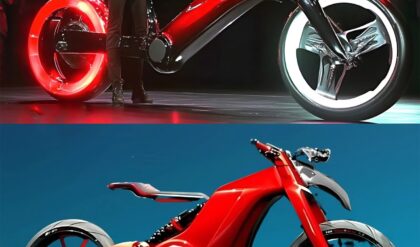If there was a better way to impress girls at house parties than dressing in all black, sitting in a corner with a guitar, and singing fake French, teenage Paul McCartney didn’t know it. This half-serious, half-joking schtick was the young Beatle’s go-to party move in the late 1950s.
While the jury might be out on the technique’s efficacy, it did manage to produce one of the Beatles’ most performed tracks of all time. (If only McCartney could’ve known what was to come—perhaps that would’ve soothed the sting of teenage social anxiety.)

Following the French Trend
,
“Michelle” is one of the Beatles’ oldest tunes, but it didn’t appear on a full-length record until 1965 when it closed Side One of ‘Rubber Soul.’ The slightly jazzy, pared-back love song features McCartney on lead vocals with lush backing harmonies. McCartney notably switches back and forth between French and English, a creative choice that started in an attempt to look cool at house parties thrown by John Lennon’s art tutor, Austin Mitchell.
“I remember sitting around there, and my recollection is of a black turtleneck sweater and sitting very enigmatically in the corner, playing this rather French tune,” McCartney recalled in Barry Miles’ Many Years From Now (via Far Out Magazine). “I used to pretend I could speak French because everyone wanted to be like Sacha Distel.”
Technically speaking, the “rather French tune” marked some of the Beatles’ first innovations from three-chord rock and roll to fingerpicking accompaniment that featured a bass line, melody, and harmony in one guitar part. Linguistically speaking, the song was a tongue-in-cheek joke. McCartney’s French was nasal mumbo jumbo—a caricature with which to entertain.
During the writing stages of the Beatles’ 1965 record, John Lennon proposed incorporating McCartney’s old party tune into the album. Now tasked with turning his French groaning into actual lyrics, the bandmates reached out to their mutual friend, Ivan Vaughan, whose wife, Jan, taught French. McCartney collaborated with Jan in creating the song’s iconic hook, which the pair built off a name McCartney was particularly keen on: Michelle.
“I said, ‘I like the name Michelle. Can you think of anything that rhymes with Michelle in French?’” McCartney said in Miles’ book. “She said, ‘Ma belle.’ I said, ‘What’s that mean?’ ‘My beauty.’ I said, ‘That’s good, a love song, great.’ We just started talking, and I said, ‘Well, those words go together well, what’s French for that?’” And suddenly, the entire chorus was complete.
Michelle, ma belle, these are words that go together well, my Michelle
Michelle, ma belle, sont les mots qui vont tres bien ensemble, tres bien ensemble
The second French line in the chorus directly translates to “are the words that go very well together.” Indeed, one can clearly see the stream of consciousness that connected McCartney and Jan’s conversation to the song’s final form. In true McCartney fashion, he created a catchy, commercially sensible tune with little more than a basic lyrical idea and a pleasing chord progression.
For some Beatles fans, “Michelle” is essential to the band’s overall catalogue. To other, more critical ears, it was a cutesy attempt to appeal to the lowest common denominator. (Bob Dylan famously called it and “Yesterday” cop-outs that paled in comparison to early American contributions housed at the Library of Congress.) Nevertheless, the song’s track record speaks for itself.
Lennon and McCartney won a prestigious Ivor Novello award in 1966 after “Michelle” became the most covered song of the year. McCartney cut Jan Vaughn in on the track’s success, sending her a check for her contributions as the song’s French co-writer.
McCartney rarely covers the song these days, though he did perform his 1965 hit at a 2009 performance in Washington, D.C., in honor of former First Lady Michelle Obama. Whether you love or hate the track, it’s impossible to deny the song’s historical trajectory from being sung as a half-drunken chanson to impress local Liverpoolers to becoming a record-breaking hit serenaded to the First Lady of the United States.





